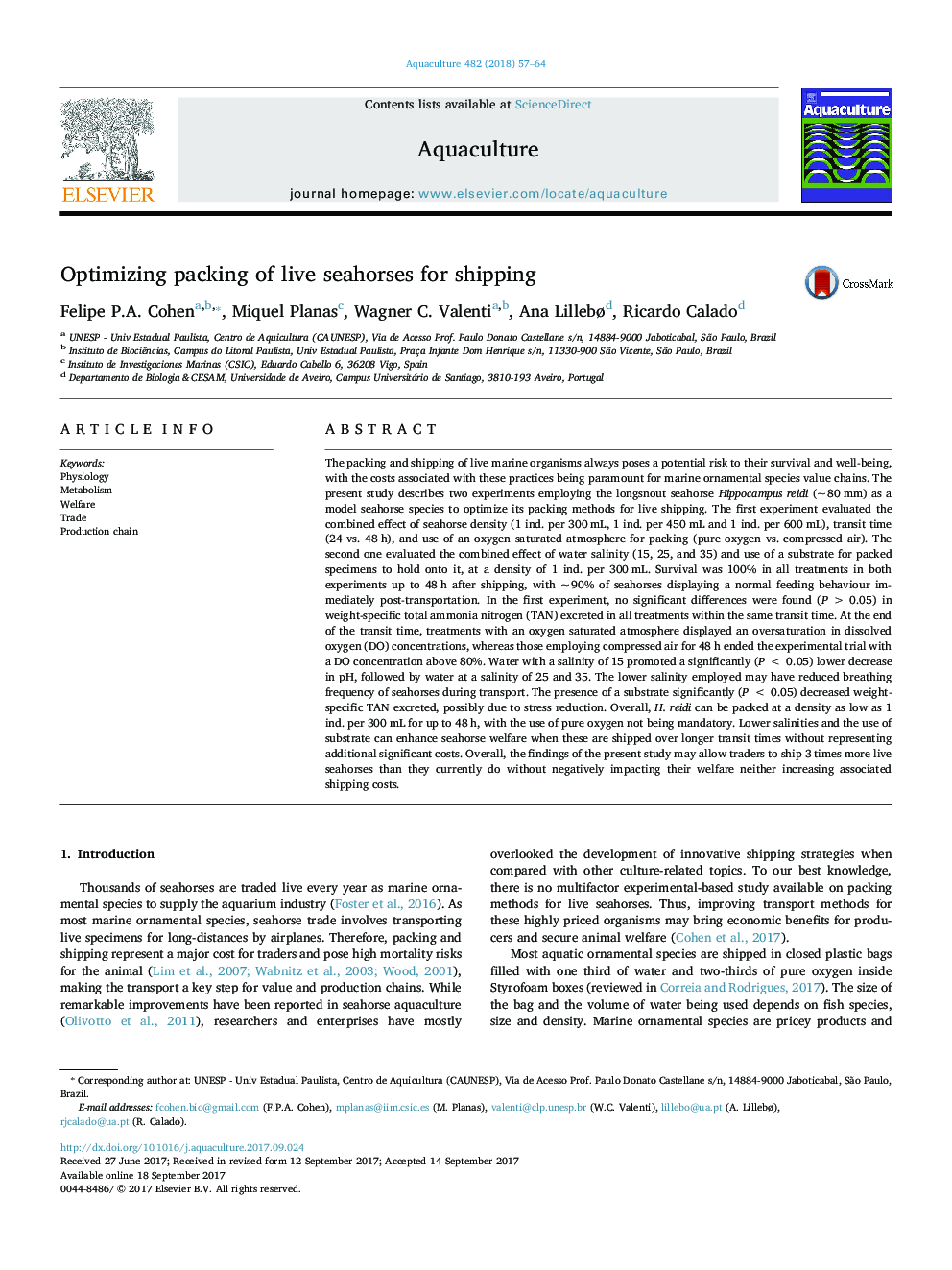| Article ID | Journal | Published Year | Pages | File Type |
|---|---|---|---|---|
| 5539108 | Aquaculture | 2018 | 8 Pages |
Abstract
The packing and shipping of live marine organisms always poses a potential risk to their survival and well-being, with the costs associated with these practices being paramount for marine ornamental species value chains. The present study describes two experiments employing the longsnout seahorse Hippocampus reidi (~Â 80Â mm) as a model seahorse species to optimize its packing methods for live shipping. The first experiment evaluated the combined effect of seahorse density (1 ind. per 300Â mL, 1 ind. per 450Â mL and 1 ind. per 600Â mL), transit time (24 vs. 48Â h), and use of an oxygen saturated atmosphere for packing (pure oxygen vs. compressed air). The second one evaluated the combined effect of water salinity (15, 25, and 35) and use of a substrate for packed specimens to hold onto it, at a density of 1 ind. per 300Â mL. Survival was 100% in all treatments in both experiments up to 48Â h after shipping, with ~Â 90% of seahorses displaying a normal feeding behaviour immediately post-transportation. In the first experiment, no significant differences were found (PÂ >Â 0.05) in weight-specific total ammonia nitrogen (TAN) excreted in all treatments within the same transit time. At the end of the transit time, treatments with an oxygen saturated atmosphere displayed an oversaturation in dissolved oxygen (DO) concentrations, whereas those employing compressed air for 48Â h ended the experimental trial with a DO concentration above 80%. Water with a salinity of 15 promoted a significantly (PÂ <Â 0.05) lower decrease in pH, followed by water at a salinity of 25 and 35. The lower salinity employed may have reduced breathing frequency of seahorses during transport. The presence of a substrate significantly (PÂ <Â 0.05) decreased weight-specific TAN excreted, possibly due to stress reduction. Overall, H. reidi can be packed at a density as low as 1 ind. per 300Â mL for up to 48Â h, with the use of pure oxygen not being mandatory. Lower salinities and the use of substrate can enhance seahorse welfare when these are shipped over longer transit times without representing additional significant costs. Overall, the findings of the present study may allow traders to ship 3 times more live seahorses than they currently do without negatively impacting their welfare neither increasing associated shipping costs.
Related Topics
Life Sciences
Agricultural and Biological Sciences
Aquatic Science
Authors
Felipe P.A. Cohen, Miquel Planas, Wagner C. Valenti, Ana Lillebø, Ricardo Calado,
